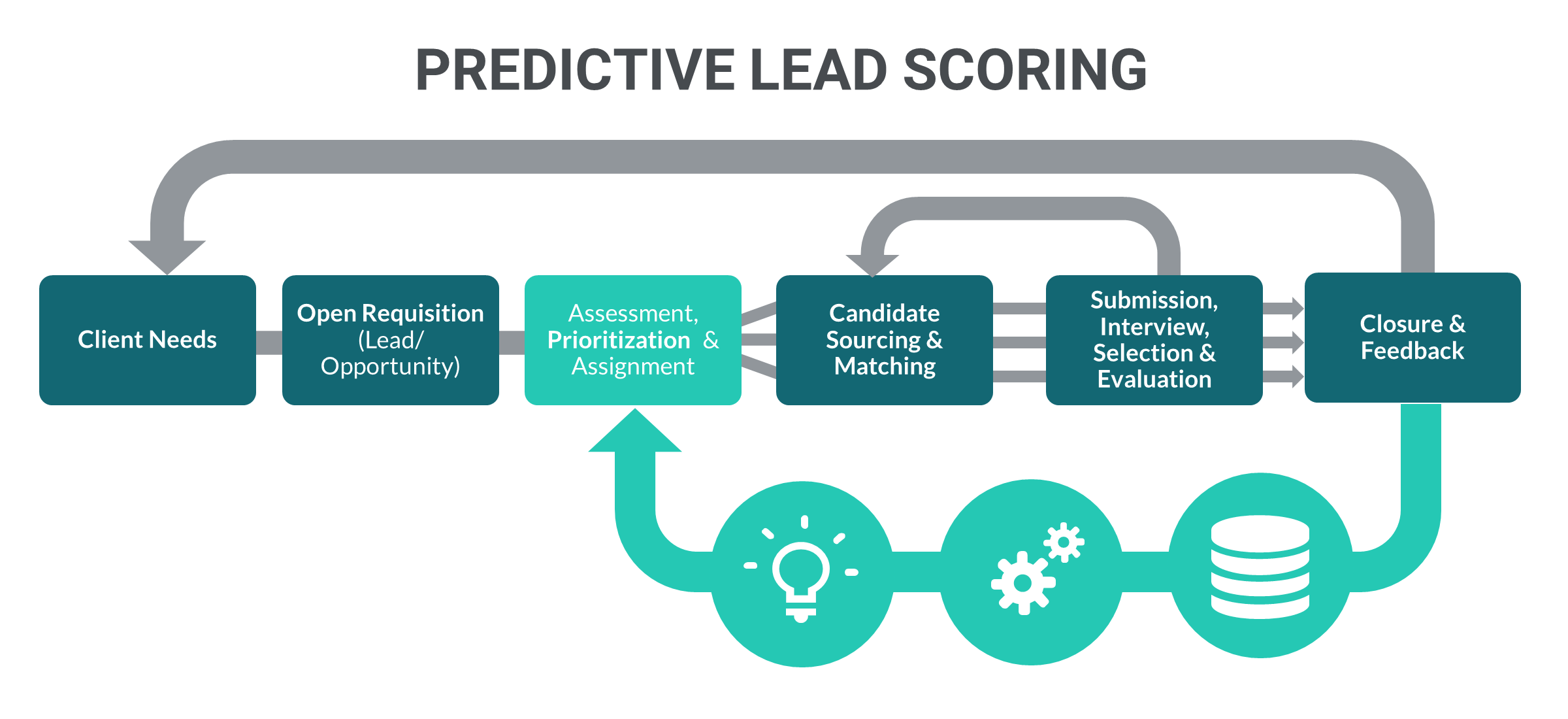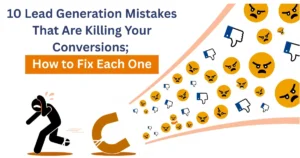In this respect, lead scoring optimization of lead scoring models will be very important for technology companies to adopt better strategies for lead generation and conversion. Scoring can prioritize leads to ensure much easier sales efforts, hence giving a better ROI on marketing. This article has presented a complete guide on optimizing a lead scoring model for better results in generating leads within the technology sector.
Understanding lead scoring in technology companies
- Tech lead generation: The role of lead scoring in optimizing lead management.
- B2B technology leads: Lead scoring in the B2B sales strategy.
- SaaS lead generation: How to fit lead scoring into subscription-based models.
Lead scoring is an important part of lead management, which helps technology companies lead based on their likelihood of closing. For any tech company with B2B technology and SaaS, effective lead scoring drastically improves sales and marketing output. A proper assessment and ranking of leads help the organization focus its efforts on the prospects who are likely to convert and ensure increased conversion rates and ROI in the long term.
Key components of an effective lead scoring model
The effective lead-scoring model involves specifying the key criteria, followed by information gathering based on the data analytics, and continuous refinement for meeting business objectives.
Defining key criteria for lead scoring
- IT sales lead: Lay down relevant key criteria for lead scoring in the technology industry.
- Solutions: Establish criteria for lead behavior, demographics, and engagement.
To optimize lead scoring, technology companies must define the key criteria that will be used to evaluate and rank leads. For IT sales leads, relevant criteria might include lead behavior, company size, job role, and engagement level. By developing a comprehensive set of criteria, companies can create a scoring model that accurately reflects the potential value of each lead.
Criteria for lead scoring
- Behavioral data: Analyze how leads interact with marketing content and sales outreach.
- Demographic data: Company size, industry, and role come into consideration in the analysis of the lead.
- Level of engagement: Activity about leads while navigating through marketing materials and sales efforts.
Interest and readiness can be estimated by analyzing various data on lead behavior, for example, how they interact with marketing content and sales outreach. Demographic data, such as company size, industry, and job role, helps identify if the lead is a good fit for the offering of the company. The level of engagement can be measured by how actively leads participate in communication and consume the content that indicates their likeliness to convert.
Leveraging data-driven insights
- Data-driven lead generation: Data-driven lead generation uses analytics to track and drive lead-scoring decisions.
- Solutions: Avail the analytics tools that can track and analyze lead interactions.
Data-driven insights are key to optimizing the models. Using analytics tools, technology companies will be able to track and analyze lead interactions to gain proper insights into lead behavior and preference. This will allow them to develop refined lead-scoring criteria in a bid to improve the precision of the scoring model.
Implementing analytics tools
Track and analyze lead interactions using analytics tools to refine lead-scoring models, prioritize prospects, and boost conversions.

- Tracking lead interaction: The use of tools in tracking how leads have interacted with digital content and marketing efforts.
- Refine scoring model: Adjust scoring criteria based on data insights showing the efficiency of better lead prioritization.
Implementing analytics tools allows for detailed tracking of lead interactions with digital content and marketing efforts. By analyzing this data, companies can refine their lead-scoring criteria and make more informed decisions about which leads to prioritize.
Continuously refining the lead scoring model
- Tracking lead interaction: The use of tools in tracking how leads have interacted with digital content and marketing efforts.
- Refine scoring model: Adjust scoring criteria based on data insights showing the efficiency of better lead prioritization.
Implementing analytics tools enables a company to track in detail how leads are interacting with the digital content and marketing effort. These analyzed data insights will, in turn, enable the company to refine its lead-scoring criteria and make more informed decisions about which leads to prioritize.
Conducting periodic reviews
- Technology sales funnel: It goes without saying that the scoring model should be regularly updated as changes come up in the sales funnel.
- Solution: The periodic review and adjustment will allow it to keep carrying out its purpose.
Periodic reviews of the lead scoring model are essential for assessing its performance and making necessary adjustments. Gathering feedback from sales and marketing teams helps identify areas for improvement and ensures that the model aligns with the current business environment and objectives.
Best practices for lead scoring optimization
Implementing best practices in lead scoring can significantly enhance lead management efforts and drive better results for technology companies.
Integrating lead scoring with CRM systems
- Tech industry prospects: Seamlessly integrate lead scoring with CRM systems and amplify your lead management.
- Solutions: CRM tools automate scoring and tracking a lead.
Scoring integrated with CRM systems can enable effective lead management and follow-up. Automating lead scoring using CRM tools makes it possible for technology companies to make their lead management processes more effective, where leads are sorted according to priorities based on valid and current data.
Automating lead scoring
- Integration with CRM systems: Employ automation to score with the use of CRM systems, based on predetermined criteria-response of leads by way of interaction.
- Real-time updates: All lead scores have to be updated in real-time based on the gathering of new data.
Automation of lead scoring within CRM systems ensures this process becomes real-time as the system updates new data and interactions. This saves hours by making the automation of lead managing processes a lot easier and enables sales and marketing teams to focus on the most promising leads.
Aligning lead scoring with business objectives
- Tech lead development: Ensure that the lead scoring criteria are aligned with overall business objectives and the sales organization.
- Solution: Revisit and update the scoring criteria continuously as business strategy shifts.
Alignment of lead scoring to business objectives makes sure that the model will support the overall goals and sales strategies. This also involves frequent reviewing and updating of the scoring criteria, not only to keep it aligned with business objectives but also to make sure that the lead scoring model remains potent in driving lead generation and conversion efforts.
Want to see how targeted lead generation can drive higher conversion rates for your business? Learn more about our targeted marketing services here.
Adjusting scoring criteria
- Business objectives: Change the scoring criteria to reflect changes in business strategies and objectives.
- Sales feedback: Inclusive of the feedback from the sales team to align with sales targets and priorities.
Scoring criteria would be readjusted in view of changes in business goals and feedback from sales. With this, the lead scoring model would always be relevant and effective, drive better results, and support overall business growth.
Solutions for optimizing lead scoring models
To optimize lead scoring models for technology companies, consider implementing the following solutions:
- Key criteria definition: Develop a precise set of criteria to include lead behavior and demographic data along with a grade of engagement.
- Unleash the power of data analytics: Employ analytics to understand how leads interact and enhance scoring criteria.
- Continuously refine the model: Schedule periodic reviews and modifications to maintain the worthiness of the model.
- Integrate into CRM systems: Enable automation of lead scoring and tracking through CRM systems for increasing efficiency.
- Align with business objectives: Scoring criteria need to be in alignment with overall business goals and objectives of sales.
Conclusion
Optimizing lead scoring models is one of the most vital and critical aspects of lead generation in technology firms. This process helps in defining the criteria, drawing from data-driven insights, and refining the model for improved lead management and performance. Integrating lead scoring with CRM systems further aligns with the concept of alignment with business objectives that would further improve efficiency and effectiveness. Competing with technological companies, the optimization of lead scoring would be the future pride of place in prioritizing leads, improving conversion rates, and achieving sustainable business growth.







Leave a Comment